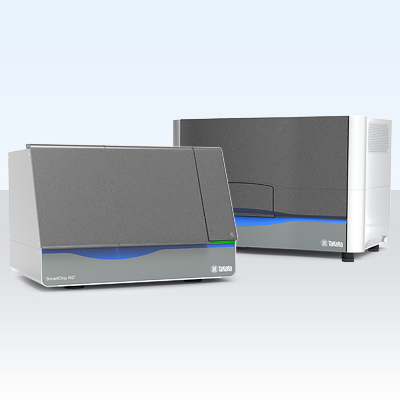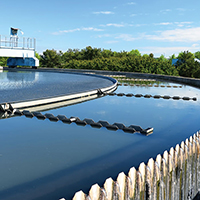Shifting perspective on methods of antimicrobial resistance detection

Antimicrobial resistance (AMR) arises when microorganisms—such as bacteria, fungi, viruses, and parasites—adapt to antimicrobial drugs. These microorganisms can acquire antibiotic resistance genes (ARGs) that enable them to withstand antibiotics. In turn, this renders many widely used antibiotics ineffective and requires the constant development of new antibiotics to combat resistant strains.
Ultimately, this can lead to increases in the spread and severity of illnesses as well as infection-related deaths. For instance, the Centers for Disease Control and Prevention (CDC) reports that there are over 2.8 million AMR infections—and over 35,000 deaths as a result—each year in the United States alone (CDC 2024). This growing prevalence of AMR underscores the urgent need for effective ways of identifying resistant strains and limiting their spread.
Three common AMR detection methods
While AMR detection strategies continue to evolve over time, there are three primary methods used worldwide. Each comes with its own unique set of advantages and challenges.
Bacterial culture plates
Traditional methods of AMR detection use bacterial culture plates to grow microorganism samples under antibiotic exposure and observe any signs of antibiotic resistance. This method is simple and requires few materials. However, it has a long turnaround time of 24 to 48 hr, fails to account for nonculturable microorganisms, and relies on subjective human judgment to interpret results. The process can also be labor-intensive, requiring trained lab technicians to handle and assess each individual sample.
Sequencing
Sequencing is a technique that detects ARGs in microorganisms as an indicator of AMR. While it can provide detailed information on multiple samples at once, it requires complex data analysis and technical expertise from lab technicians. Furthermore, sequencing can be an expensive process, which makes it less practical for large-scale and long-term projects.
Conventional qPCR
Conventional qPCR also works by detecting ARG targets from microorganisms in samples. This method is remarkably fast (~3 hr), easy to use, reliably quantitative, and cost-effective. At first glance, conventional qPCR appears very well-suited for AMR monitoring. However, it also has its drawbacks. Conventional, plate-based qPCR limits users to testing between one and four samples per plate for traditional panels of 96 ARG targets, and the large reaction volumes required for each run can result in prohibitive costs when scaling up. As demand grows for routine, large-scale AMR monitoring of hundreds of ARG targets, conventional qPCR may not be able to keep up.
The ideal solution for AMR detection
![]()
Of the three main methods for AMR detection, conventional qPCR is the simplest and fastest on a small scale, but is difficult to scale up for high-throughput projects. As the number of discovered ARG targets reaches the thousands, an ideal AMR detection method must provide:
- Scalable, high-throughput capabilities
- Rapid processing with minimal hands-on time
- Low material and labor costs per reaction
- A high volume of trustworthy data per run
- Flexibility to accommodate different ARGs and sample types
As such, an automated real-time PCR system can address these requirements while still providing much needed result accuracy and specificity. Some PCR systems can even process more than 5,000 qPCR reactions in a matter of hours, increasing daily PCR throughout 3X compared to 384-well plates (Roepke 2023), which addresses the previously unmet need for fast, high-throughput screening. Solutions like this allow laboratories to overcome bottlenecks that the other three methods may produce, and enhance the ability to efficiently study the presence of ARGs in the environment.
Get started with Takara Bio
![]()
The fight against AMR requires innovative solutions to detect resistance faster and more effectively. Takara Bio’s SmartChip ND™ Real-Time PCR System combines the reproducibility of qPCR with new solutions that enable efficient high-throughput AMR detection—get more data for every run with 5,184 PCR reactions per chip; reduce scale-up costs with nanoscale reaction volumes; adjust for newly discovered ARG targets with customizable assay formats; acquire accurate, sensitive qPCR data from samples in less than 3 hr; and simplify your workflow with automated dispensing/cycling and user-friendly analysis software. Read more about the SmartChip ND Real-Time PCR System to discover how it can help you stay ahead in AMR surveillance.
References
Centers for Disease Control and Prevention (CDC). Antimicrobial resistance facts and stats. Antimicrobial Resistance, 2024.
Roepke, D. (2023). VDL studying high-capacity methods to address growing testing needs. News Service. Iowa State University. Iowa State News Service. https://www.news.iastate.edu/news/2023/06/20/highcapacitytesting
AMR surveillance solutions
SmartChip ND™ Real-Time PCR System
A complete system that enables high-throughput, high-density, real-time PCR for gene expression or single nucleotide polymorphism (SNP) genotyping analyses.
NucleoMag DNA Microbiome
High-throughput isolation of genomic DNA from stool, soil, and biofilms.
Webinar: Monitoring ARGs in environmental samples
Register to learn how the SmartChip Real-Time PCR System powers ARG surveillance in this guest webinar.
Takara Bio USA, Inc.
United States/Canada: +1.800.662.2566 • Asia Pacific: +1.650.919.7300 • Europe: +33.(0)1.3904.6880 • Japan: +81.(0)77.565.6999
FOR RESEARCH USE ONLY. NOT FOR USE IN DIAGNOSTIC PROCEDURES. © 2025 Takara Bio Inc. All Rights Reserved. All trademarks are the property of Takara Bio Inc. or its affiliate(s) in the U.S. and/or other countries or their respective owners. Certain trademarks may not be registered in all jurisdictions. Additional product, intellectual property, and restricted use information is available at takarabio.com.






